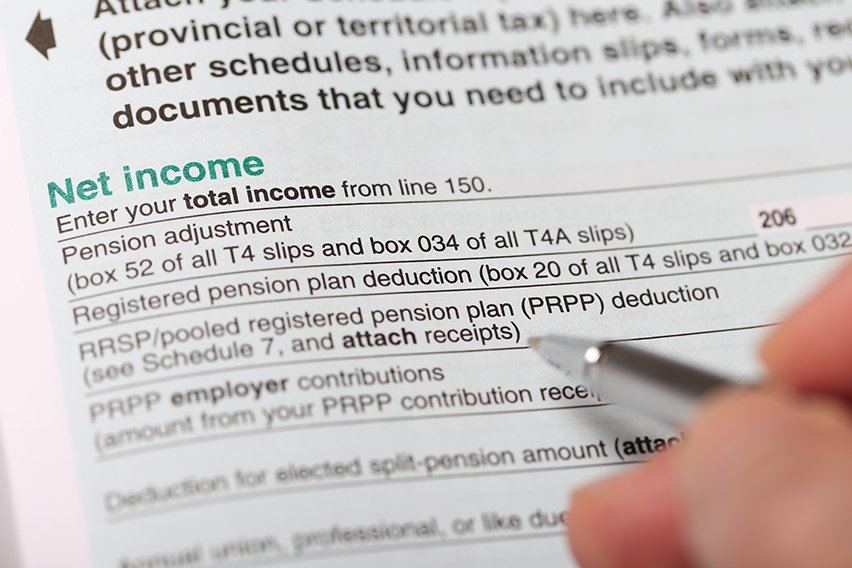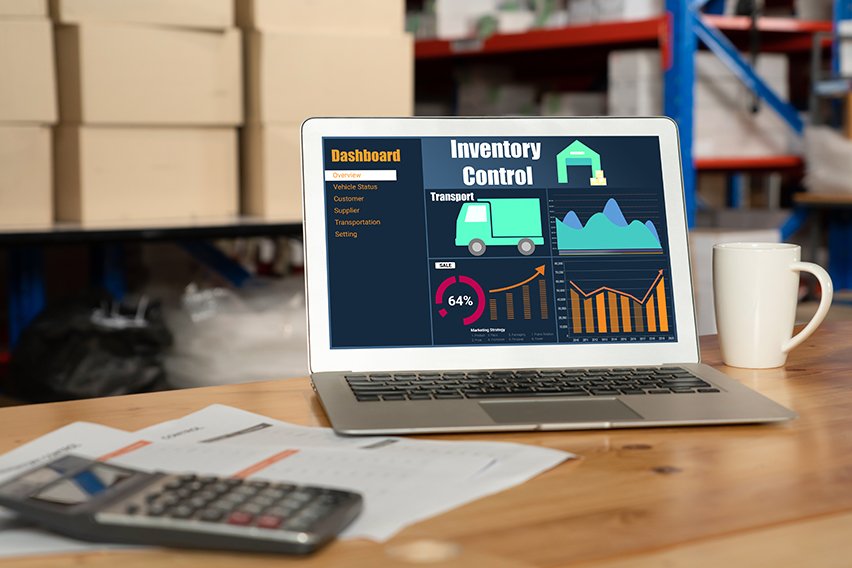What is the Cost Principle? Definition & Meaning

When you’re starting to dive into accounting, you’ll come across an entire glossary of terms. Some of them may seem familiar, while others will be entirely foreign. Some of the familiar terms may have accounting-specific definitions, as well. One of these terms is the cost principle. When it comes to accounting, the cost principle is very important.
If you’re handling your business’s accounting, understanding the cost principle can help you in the long run. In this article we will be covering the concept of the cost principle, what it means, and how it can affect your business. Keep reading to find out more!
Here’s What We’ll Cover:
Exceptions to the Cost Principle
Should My Business Be Using the Cost Principle?
The Benefits of Using the Cost Principle
The Disadvantages of Using the Cost Principle
5 Examples of the Cost Principle
Using Accounting Software to Make Using the Cost Principle Easier
Frequently Asked Questions About the Cost Principle
What is the Cost Principle?
In accounting, there are several underlying guidelines. These are the accounting principles. One of those guidelines is the cost principle. It is also referred to as the historic cost principle.
The cost principle requires that a business records its assets at the cash amount it was acquired for. This original cost is maintained throughout the asset’s life. At no point in time should an asset be recorded at its fair market value.

What is an Asset?
It is assumed that the majority of business owners know what their assets are. However, to be thorough, it is important to state that assets are anything of value owned by a business. Because assets are an essential part of business, it is important that their value is recorded and reported accurately.
The Cost Principle Helps Maintain a Consistent Balance Sheet
Because the cost principle states that assets should be recorded at their original cost, the balance sheet is easier to maintain. This is due to the fact that the value of an asset can change after it was purchased. Market conditions can influence asset value greatly, depending on the item.
Assets normally depreciate, but some may increase in value. This can happen for a number of reasons. Something that is a few years old can go out of production. This could increase its value by making it rare, and desired. Sometimes scarcity can cause the same thing. Something that we’ve seen thanks to the pandemic is resource scarcity for vehicle production. As such, used vehicle prices have increased quickly. No matter what the reason is, the cost principle states that on the balance sheet, the asset maintains its original value.
Current assets aren’t affected very much by the cost principle. Your bank account is a great example of this. Bank accounts are short-term assets. They don’t have the opportunity to gain value like long-term assets do. Some long-term assets that need to fall under the cost principle are heavy machinery and equipment. Both are expected to last for years to come, and can see an increase or decrease in value, depending on the market. They need to be recorded at face value, and are balance sheet items that maintain their original cost.
Exceptions to the Cost Principle
As with anything, there are exceptions to the cost principle. Liquid assets, like debt or equity investments, are exempt from the cost principle. These assets are intended to be turned into cash. They aren’t used for any other purpose, like machinery or equipment is. All liquid assets are recorded on the balance sheet at their current market values. This means that over time, improvements in market value can be monitored and assessed.
Another exception to the cost principle are accounts receivable. Accounts receivable are displayed as a realizable balance. The realizable balance is the balance expected once the accounts are paid on. As such, the net balance for accounts receivable will fluctuate over time, like liquid assets will.
Appreciation and Depreciation
Appreciation and depreciation are two financial principles that apply to all assets. They are not normally included in the cost principle. However, using specific accounting techniques listed below, they can be taken into account. These processes are required to account for any changes that occur.
Asset Appreciation
Appreciation of an asset occurs when the value of the asset increases. When reviewing the worth of assets, appreciation is treated as a gain. The difference of the asset’s current worth and the original cost is recorded as a “revaluation surplus.” This can add net worth to a business over time if assets continue to appreciate.
Asset Depreciation
Depreciation is the exact opposite of appreciation, and most assets undergo it. Depreciation is when an asset loses value over time. There are many different ways to calculate depreciation. Regardless of the method used, depreciation is treated as a loss. It is expensed throughout the asset’s useful life.
Other Accounting Methods
There are some other accounting methods that can be compared to the cost principle. The two below are the best for comparison, and highlight where the cost principle can fall short.
Historical Cost Vs Asset Impairment
Asset impairment and depreciation are similar, but they apply to different aspects of a business’s assets. Depreciation occurs because of wear and tear. This wear and tear happens over long periods of use, and causes the asset to lose value. Impairment happens to other assets. These are normally the intangible assets.
Goodwill is one of the assets that asset impairment occurs with. Asset impairment indicates that an asset’s fair market value has dropped below what it was originally listed as. Asset impairment charges occur when companies restructure. This is due to the revaluation of intangible assets, allowing the company to make better business decisions.
In this example, goodwill must be tested annually for impairment. If it is worth less than the value on the books, then the goodwill is considered to be impaired. If it has risen in value, then no changes are made to the historical cost. This is an example of how cost principle can be detrimental in terms of asset appreciation. It is also an example of how it is advantageous when it comes to depreciation.
Historical Cost Vs Mark-to-Market
Mark-to-market is a more modern accounting method. It is more involved than the historical cost method, though. Mark-to-market is also known as fair value accounting. In this method, assets are recorded at their current market value. This means that the value of an asset changes over time. As the name implies, the value changes based on the current market conditions. As such, there is a deviation from the cost principle. This deviation is a helpful figure. It can be used when reporting on assets that have been held in anticipation of sale.
Using the market value of an asset can be very useful. When you’re looking to predict cash flow for your business, the amount of money to be made from selling assets is important. The mark-to-market method allows for this calculation.
An example of a mark-to-market asset is marketable securities. Marketable securities are often held, waiting to be sold at the right moment. These assets move up and down with the market. This means that their true value is constantly viewed and reviewed. This allows for an accurate representation of the worth of the company’s assets. Mark-to-market is the most useful when applied to liquid assets. Liquid assets are meant to be held, then sold at the right time.
Should My Business Be Using the Cost Principle?
In Canada, to be GAAP compliant, the cost principle must be used. This means that the historical cost principle must be used to maintain compliance in accounting in Canada. In addition to this, there are some benefits to using the cost principle, as well. Both benefits and drawbacks of the cost principle are explained below.
The Benefits of Using the Cost Principle
The below areas are some of the benefits of using the cost principle for your business.
A Consistent Balance Sheet
If your business is looking for investors or lenders, a consistent balance sheet is important. When you don’t adopt the cost principle, your assets may be subject to volatile market conditions. This means that the overall value of your business will rise and fall. Investors want to put their money into a business that will help them earn their money back. A lender wants to be assured that they’ll be paid back in a timely manner. A consistent balance sheet indicates that to them.
Cost Verification is Simple
If your business’s assets are always recorded at the same cost, then verifying costs is much easier. Verification is easily the most important part of accounting. When you use the cost principle, costs of an asset are always the same. There’s no guesswork when it comes to cost verification. It also means that the value of assets never has to be checked to continue using the cost principle.
Adjustments Aren’t Necessary
If assets are always maintained at the original cost, then adjustments are unnecessary. This means that financial statements are easier to manage overall. Using the fair value method, costs and assets will continue to fluctuate as the market changes. This can make accounting an arduous task to take on.
Assets Have an Objective Value
When using the cost principle, an asset’s value is easy to determine. The only thing required to prove an item’s worth is a document. This document can be a receipt for the purchase of the asset. It can also be an invoice, or bank transaction. The objective value is far easier to determine.
Using the Cost Principle Saves Money
The cost principle is widely regarded as one of the easiest accounting methods to adopt. As such, this means that the professional fees associated with it are lower. When using any other method of valuation for assets, more time is required. To determine the fair market value of an asset, depreciation has to be assessed. Additionally, the market has to be analyzed. This makes it very difficult to determine an item’s value.
On the other hand, the cost principle will always provide an asset’s value in a single figure. This makes it much easier for an accountant to report on. When something is easier, the service surrounding it will cost less money to perform.
The Disadvantages of Using the Cost Principle
While the cost principle seems advantageous, it may not be every business’s best method. In fact, there are many accounting professionals that find the method to be controversial. This is due to a handful of significant disadvantages that come with the cost principle.
A Lack of Accuracy
Because asset values change constantly, using the cost principle can lack accuracy. Assets appreciate and depreciate in value. When you don’t take those fluctuations into account, a business’s financial position is difficult to assess. A business using the cost principle may have far less worth thanks to depreciated machinery. It may be worth far more, too, if assets have risen in value significantly.
Intangible Assets Are Not Recorded
Some of the most valuable assets to a growing business are intangible. When using the cost principle accounting method, none of them are taken into account. Brand identity and intellectual property are two examples of this. These are both built up over time, meaning that they start out with a value of zero. These assets cannot be represented using the cost principle because of this.
5 Examples of the Cost Principle
The concept of the cost principle can be something that is hard to grasp. It’s hard to picture how something can increase or decrease in value, but still be considered the same value. Here are 5 different examples of the cost principle to help you.
Example 1
A company paid to build an office building in 2000. The cost to construct the building was $250,000. In 2021, the fair market value of the office building is now $1 million. The company’s balance sheet has not changed, however. The cost of the office building is still listed as $250,000 on the balance sheet.
Example 2
John’s company purchased a work truck in 2015 for $50,000. Because of depreciation, the vehicle’s value has depreciated significantly. It’s fair market value is now $10,000. On the balance sheet, the work truck is still listed at the original cost of $50,000. In addition to the original cost, the accumulated depreciation is recorded. On the balance sheet, the figure shows up as ($40,000).
Example 3
A music company purchases the copyright to a movie from an independent filmmaker. The newly purchased asset should be recorded at the cost of the purchase itself. However, because the copyright is an intangible asset, it is not recorded on the balance sheet whatsoever.
Example 4
Lisa’s company purchased a piece of equipment for the kitchen in 2018 for $15,000. The machinery is highly sought after. However, in 2021, the company is no longer producing it. Because of this, it has increased in value to $21,000. The cost on the balance sheet remains at the original price of $15,000.
Example 5
A company purchased a piece of machinery for $25,000 in 2010. Over the last 11 years, the machinery’s value has depreciated to around $5,000. The cost of $25,000 is still recorded on the balance sheet, and the depreciation of $20,000 appears as ($20,000) on the statement.
Using Accounting Software to Make Using the Cost Principle Easier
Because the cost principle is commonly used, and often required, most accounting software enables it. As such, the use of the cost principle will typically be built-in. This means that when you purchase assets, they are recorded at the same cost from period to period.
When you’re looking for accounting software, you want something that will allow your business to remain GAAP compliant. This is highly important for your business. The cost principle is a large part of being compliant, and any good software will include it. Additionally, many of these options will allow you to store documents that justify the cost recorded on the balance sheet. If you plan on using the cost principle, plan on using reputable accounting software.

Frequently Asked Questions About the Cost Principle
The cost principle can be a frustrating concept to absorb. As such, there are plenty of questions surrounding it. Below are some of the most commonly asked questions regarding the cost principle.
I know that asset appreciation doesn’t show up using the cost principle. Should depreciation still be recorded?
Yes, when using the cost principle, depreciation of an asset still needs to be recorded. Using the cost principle will still record the original cost of the asset. However, most assets depreciate in value over time. The asset’s depreciation should be recorded.
Why should the cost principle be used over fair market value? Isn’t fair market value more realistic?
The cost principle is more important to a company for historical purposes. This is because the price you purchased an asset at may not be the fair market value to another person. Fair market value is a subjective matter. What you purchased an asset for is objective. You have proof of the purchase, and no one can tell you that the value is lower than that.
To put it more simply, the original cost is far more consistent for your books. If you were to use the fair market value, the value of some assets could change from day to day. In some cases, it may be dynamic enough to change from hour to hour. Therein lies the issue with fair market value – it isn’t predictable. Accounting likes to be predictable, with the exception of intangible assets and liquid assets.
Why is the cost principle important?
The cost principle is a way to record an asset’s cost, or value. Being able to determine the value of an asset objectively is a consistent accounting method. It is also the easiest way to determine an asset’s value, making it widely accepted among accountants.
What are the other principles of GAAP?
GAAP, or the generally accepted accounting principles, consists of 10 different principles. The cost principle is a large part of GAAP. However, the 10 principles are recorded differently. All 10 principles are listed below for your benefit.
- Principle of Regularity. This translates to the accountant adhering to GAAP rules and regulations as a standard.
- Principle of Consistency. Accountants must use the same standards when reporting financial information. This ensures financial comparability between periods. Using the cost principle is a large part of this.
- Principle of Sincerity. This means that the accountant provides an accurate depiction of a company’s financial state to the company.
- Principle of Permanence of Methods. Accountants must use the same financial procedures when reporting financial information. This also includes using the cost principle.
- Principle of Non-Compensation. All positives and negatives must be reported accurately.
- Principle of Continuity. When valuing assets, the accountant must assume that the business is going to continue to operate.
- Principle of Prudence. This means that financial data will be reported based on facts, not speculation.
- Principle of Periodicity. All information being recorded needs to be reported during the relevant accounting period.
- Principle of Materiality. Accountants should fully disclose financial data and accounting information in their reports.
- Principle of Utmost Good Faith. This means that all parties involved in the accounting process should be honest in all transactions.
Why is the cost principle used?
The cost principle is used for two reasons. It makes asset values objective, and it is easier to report on than other methods. This makes it highly appealing for businesses of all sizes.
Why do costs need to be verified? How does this apply to the cost principle?
In the world of accounting, costs need to be verified so that books can be balanced. As such, methods of verification need to be available for assets. When using the cost principle, costs are verified by their entries on the books. These entries are normally accompanied by a document, like a receipt or an invoice. As such, the documentation required for the cost principle is easy to provide. Most accounting programs provide record keeping for this purpose specifically.
When using other methods of accounting, like fair market value, cost verifications can be harder to provide. If you’re trying to prove the value of an item or a cost using fair market value, substantial work is involved. This can include current value for similar items, inspection on the wear and tear, and a professional appreciation. This is costly, and can be a difficult task for any business.
Can the cost principle be used for bartered assets?
This is an interesting question. Using assets that are acquired without purchase can be a challenge when using the cost principle. It can be used when trading something in, like a vehicle. The cost would be recorded as the value offered by the dealership for the trade-in, as well as the cash paid on top.
If an asset is inherited, it will act like a liquid asset, or an intangible asset. Effectively, it would have no value as an asset on the balance sheet. This is because a cost is required to document such things. When obtaining an asset, make sure that it is documented. Otherwise, it doesn’t fit into the cost principle accounting model.
How do appreciation and depreciation affect the cost principle?
The cost principle is only affected by depreciation. This is a practical method of accounting when considering depreciation and its effects on the business. It allows the value of an asset to remain the same over its useful life. This is a great thing for any assets that may depreciate over time.
The cost principle becomes impractical when you have assets that appreciate in value. When you have an asset that increases in value over time, there is no way to make the balance sheet equal. The cost principle relies on this balancing act to be effective. Because appreciation adds value, it begins to outweigh the cost (or the value) of the asset. This is avoided in depreciation, because the amount of depreciation can be listed equally on the balance sheet.
Key Takeaways
The cost principle, also known as the historical cost principle, is a commonly used accounting method. It focuses on keeping balance sheets consistent over time, and assigns a constant value to assets. Because of this, it makes accounting easy. Other methods that can be used are the fair market value, as well as the asset impairment method. However, these aren’t GAAP compliant.
When using the principle cost method, good accounting software is key. Being able to keep all costs consistent over time, as well as house documents for verification, is key. As such, be sure to find good software that works for you and your accountant. We offer a free trial of our accounting software which will allow you to use the cost principle. Additionally, if this article was helpful to you, we’ve got more like it! Be sure to check out our resource hub for everything finance and business related. New content is added all the time, so be sure to check it frequently.
RELATED ARTICLES

 How to Calculate Net Income: Examples & Formula
How to Calculate Net Income: Examples & Formula What Are Pricing Strategies & 8 Common Strategies for Business
What Are Pricing Strategies & 8 Common Strategies for Business Payment Processor: Overview and Top 5 Picks for 2025
Payment Processor: Overview and Top 5 Picks for 2025 What Is Inventory Management? A Guide to Techniques & Methods
What Is Inventory Management? A Guide to Techniques & Methods Credit Vs Debit Card: What’s the Difference?
Credit Vs Debit Card: What’s the Difference?